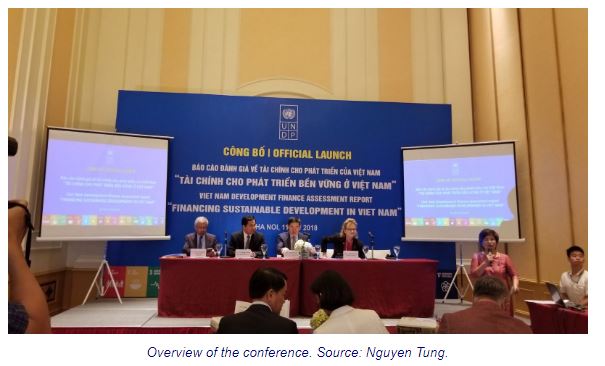Domestic private investment is key for Vietnam to achieve SDGs: UNDP
Domestic private investment amongst the lowest in ASEAN
Vietnam’s total development finance-to-GDP ratio used to be the highest until 2011, but has decreased in recent years and now remains relatively high compared to ASEAN countries, Xu said in a conference on September 11.
“[Vietnam’s] Per capita level of financial resources increased from US$511 in 2002 to US$1,226 in 2015, however, it is below the average of ASEAN countries of US$1,937,” said Ho Dinh Bao, UNDP’s expert.
On this issue, Le Quang Manh, vice minister of the Planning and Investment, said the country’s state budget revenue is not increasing fast enough to sustain the high level of public investment needed to meet increasing spending obligations, coupled with rising public debt.
“There should be a mid- and long-term strategy to secure sufficient financial resources, helping Vietnam to achieve its socio-economic development objectives,” Manh added.
Looking into Vietnam’s development finance landscape, Ho Dinh Bao, UNDP’s expert pointed to the fact that the ODA-to-GDP of Vietnam was among the highest in ASEAN since early 90s, however, the ODA flows into Vietnam is now declining, especially after achieving the lower middle-income status in 2010, and become less concessional. ODA grant – a key source for financing technical assistance and policy advising – has decreased sharply.
Moreover, increases in the recurrent expenditure obligations have placed significant pressures on the state budget. In the 2011 – 2015 period, the country’s regular budget spending increased by 75.11% and almost doubled the increase in non-grant revenue.
As a result, Vietnam’s public debt-to-GDP, once the lowest, is now the highest among ASEAN countries. However, it should be noted that Vietnam is not a highly indebted country, but government obligations to repay domestic public debt at some points exceeded the government’s debt repayment capacity, Bao informed.
Remittances, an important source of revenue for Vietnam, remain at a high level, representing 2.5% of global remittances in 2017 and accounting for 6 – 8% of GDP, which is much higher than that of other developing countries. However, the majority is flowing into consumption and not to productive investments.
Under this circumstance, domestic private finance share in Vietnam is relatively low and growing slowly, which is in stark contrast with other ASEAN countries, where the share has increased (and offsetting the overall decline in FDI and FII flows).
According to Haoliang Xu of the UNDP, domestic private investment is yet to fulfill its increasing role as a driver of Vietnam’s lower middle-income economy.
“While the volume of domestic private investment in 2015 has doubled since 2002, its share of total development finance, of around 40%, and per capita domestic private investment – US$490 in 2015 compared to the ASEAN average of US$690 – are amongst the lowest in the ASEAN region,” Xu noted.
Key areas for improvement
Xu called for urgent actions, including incentives for increasing domestic private investment; public investment crowding in private investment; attracting FDI that helps link domestic firms to global value chains; enhancing tax collection, state asset management and introducing property and environmental taxes; and working toward an integrated national financing framework for SDGs.
He recommended Vietnam move away from using tax incentives to attract FDI, for which infrastructures, services, supply chain and human resources should now be the new incentives.
According to the UNDP expert, the FDI sector contributed inadequately to the government revenue compared to the high level of incentives, especially in tax exemption and access to land. More importantly, provinces should not compete with each other for FDI through tax incentives, indicating “a race to the bottom,” according to Bao.
Vice Minister Manh acknowledged the private sector has not become a driving force for Vietnam’s economic growth, but urged the sector to step up its effort and fulfill its potential in the economy.


 Thailand
Thailand




